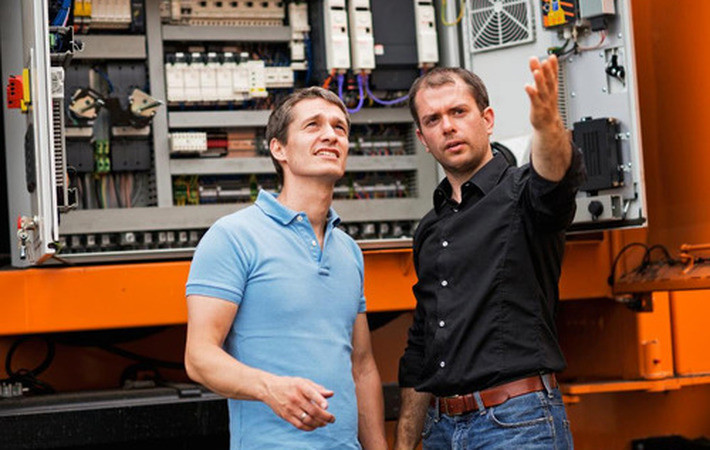
Published on 11/17/2016 | Use Cases
It’s become quite clear that the Industrial Internet of Things (IIoT) is the future of Industry. By now we’ve well and truly covered the point that IIoT is, in fact, not hype. For end users and OEMs IIoT, cloud and big data analytics are creating very real business opportunities.
IIoT not only enhances the communication between machines and people – it is facilitating the next wave of value-added customized business services. ARC Advisory Group reports that 30 percent of end users and OEMs are already actively using IIoT tools or investing in projects. With OEMs for example, according to ARC, “IIoT provides new visibility that enables value-added services, competitive advantage for product design, and revenue growth. Adoption is no longer an option”.
Human productivity is also an area that has huge potential for improvement thanks to IIoT-related services. I recently attended an event hosted by the International Business Congress (IBC) and heard a figure quoted on “wrench time” for field operators. It said that in a 10 hour shift a worker spends only 2.5 hours of that shift on productive work – work that adds value to the business – the rest of the time is taken by looking for information - probably travelling back and forth to a central maintenance office presumably searching filing cabinets looking for service manuals, along with admin work and various other non-value add tasks. This is a very interesting figure because it means that the worker is only actively productive for 25% of his time!
IIoT from a services standpoint will have several key benefits for our field worker, his boss, the business and its suppliers.
Firstly, technology vendors and suppliers will increasingly be called on to deliver their knowledge and expertise to their customers as a service. This means sites can outsource some of their maintenance. For example a facility that is trying to downsize its staff can rely on its suppliers to monitor critical equipment health via secondary sensors and upload data to the cloud. This can be very useful for complicated high performance machinery because the vendor is, in fact, likely to be the expert in the operation of the equipment. It also means that the business does not need to directly employ a specialised, and highly paid, member of staff to wait around and fix an issue when it arises. Alternatively, if a company does want in house specialists and has multiple sites, they can hire one expert who, through the use of IIoT can, monitor critical equipment at multiple sites.
Secondly, IIoT and related services will improve the efficiency of staff in the field no matter their age or experience level. We refer to this as the augmented operator and it can be illustrated through this simple analogy: if a 55 year old operator walks by a machine that is making a funny noise he may well know from experience exactly what the issue is and how to solve the problem. Contrast that with the new 25 year old operator who, without the aid of mobility devices, has to go back to the maintenance office to look for the manual of the equipment and, when he can’t find it, start ringing around to find someone who is experienced with the equipment. Going forward, the 25 year old will be able to pull the manual and troubleshooting charts up on his mobile device. Some newer equipment even has the capability to flash a dynamic QR code directly on the device allowing the operator to access real time information on the problem the equipment is experiencing, which helps the operator diagnose and solve the issue much more quickly.
Thirdly, on the customer side, IIoT will assist in the management of the maintenance supply chain by making it easier to track spare parts and inventory levels, and simplifying the ordering process. From the vendor side this represents an opportunity to build new service revenue streams by creating such digitized services – including digitized options for ordering manuals and spare parts and putting in place models to monetise the knowledge, advice and best practice of its own employees for greater customer service.
Finally, IIoT services will make the “great crew change” a less scary transition. Similar to my points above on worker efficiency and productivity, as we move from experienced operators to the next generation there are two telling statistics about aging workforce:
50% of all refinery staff will retire in the next 5 to 7 years[1]
The millennial generation will be the largest generation in the workforce by 2025[2]
So in a short period of time digital natives will make up the majority of the workforce. This means moving from an average workforce age of 50+ to a new guard of 20 somethings who have vastly less experience and very different working practices. Bridging this gap will require digital tools to not only capture the knowledge of older workers before they retire, but also make it available to the new generation in a way that supports their preference for digital work practices – tools such as augmented reality applications, dynamic QR codes and access to easy online support.
What unique services have you developed or experienced with the advent of IIoT?
References:
[1] http://articles.economictimes.indiatimes.com/2013-04-02/news/38218078_1_oil-gas-aging-workforce-hr-manager
[2] http://www.pewresearch.org/fact-tank/2015/05/11/millennials-surpass-gen-xers-as-the-largest-generation-in-u-s-labor-force/
This article was originally posted on LinkedIn.